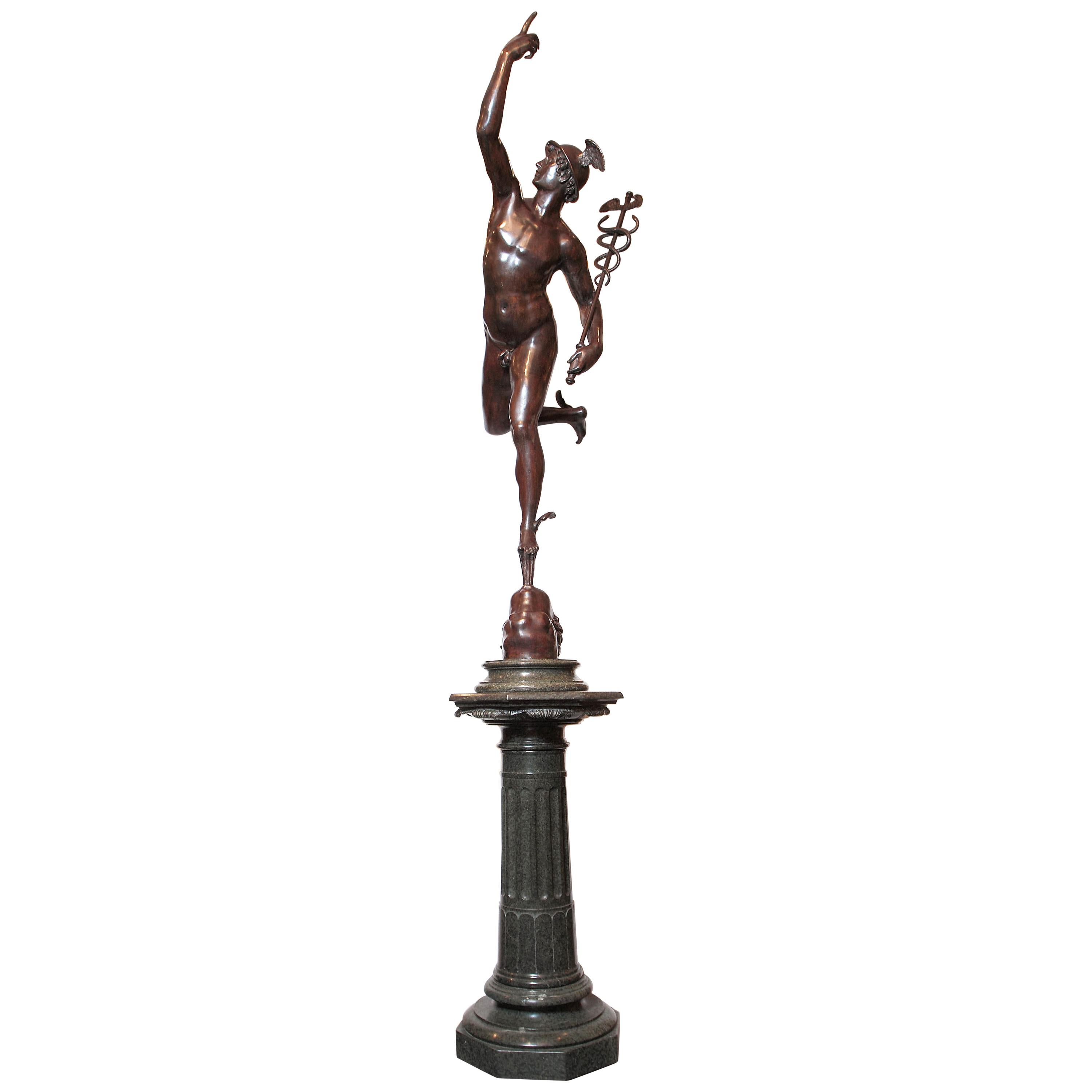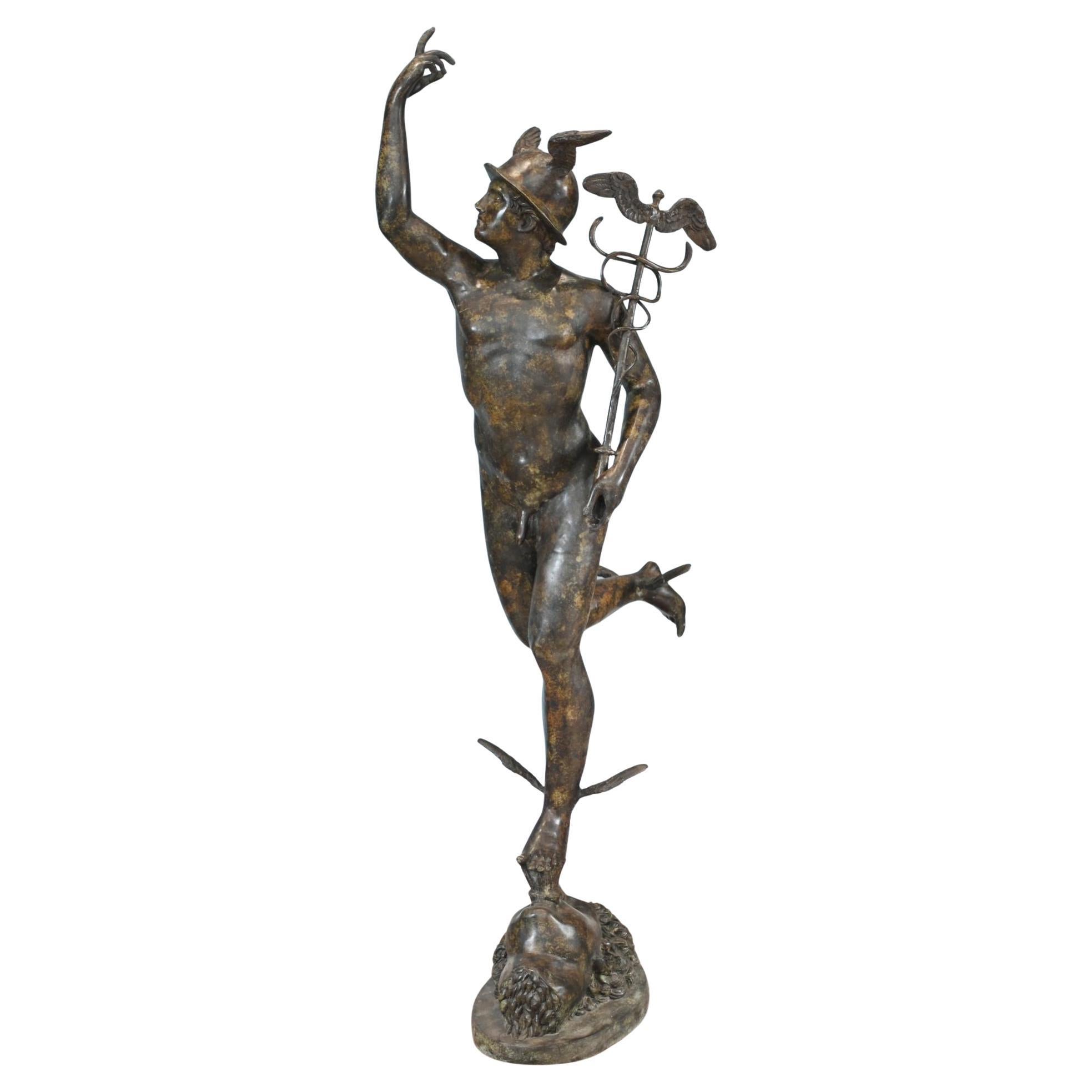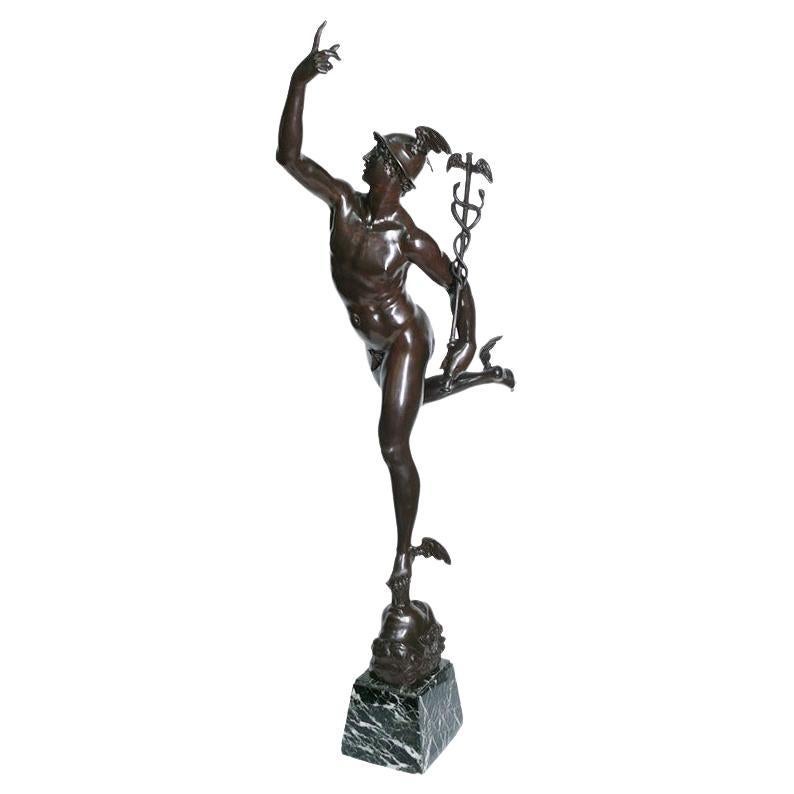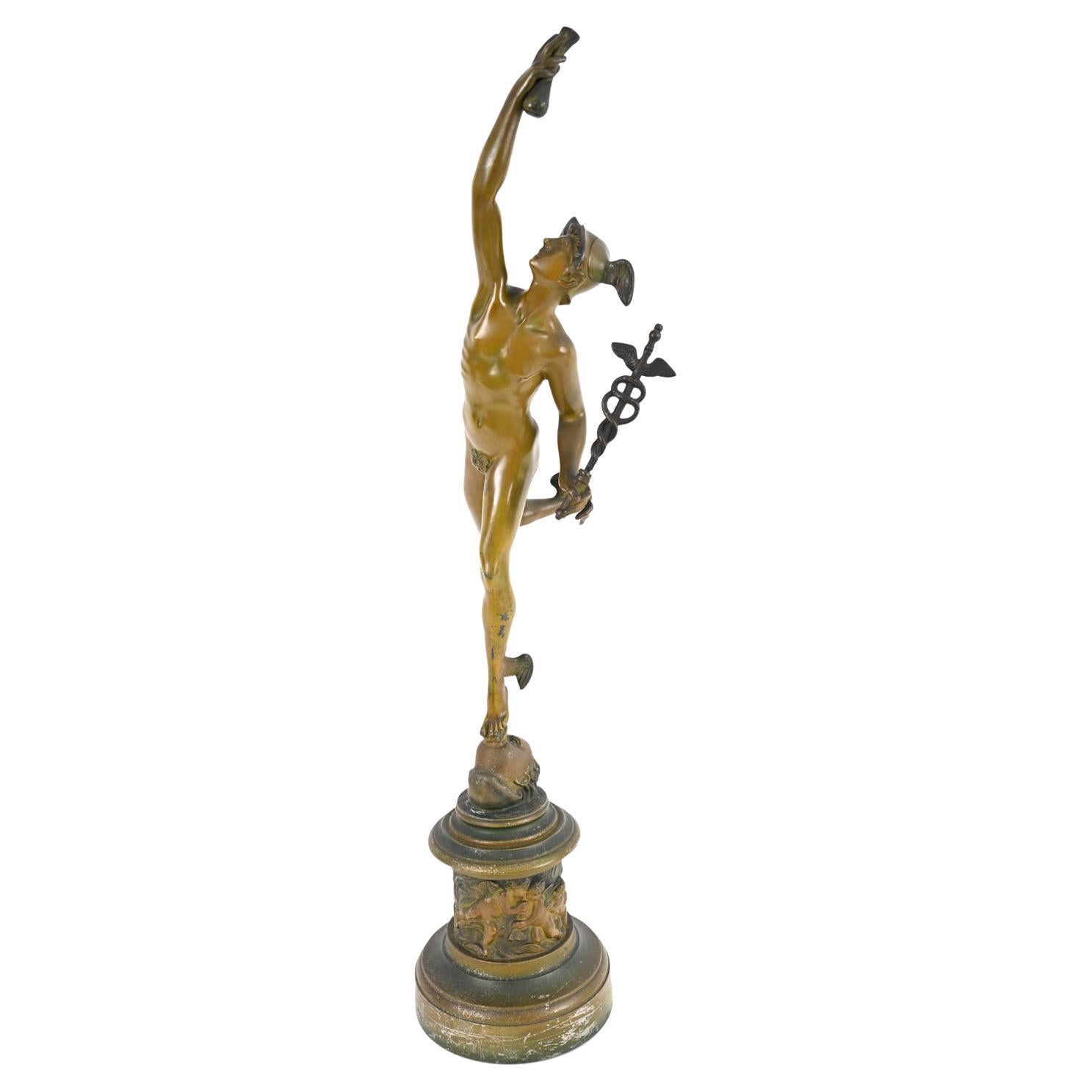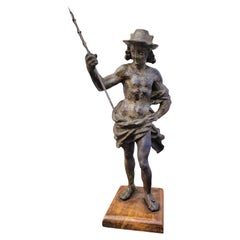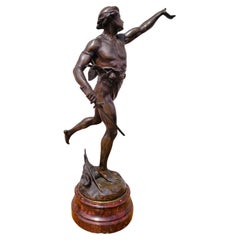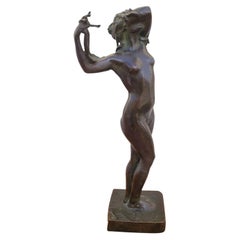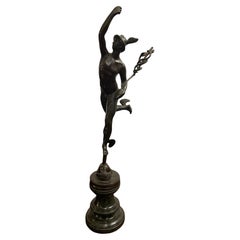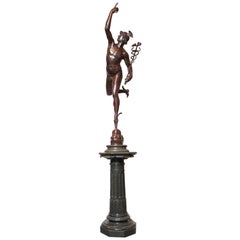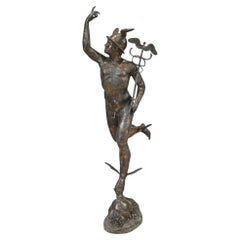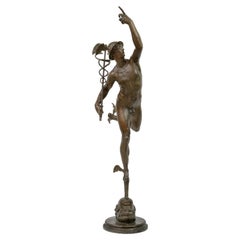Items Similar to Flying Mercury, After Giambologna, Bronze Lamp, 19th Century
Video Loading
Want more images or videos?
Request additional images or videos from the seller
1 of 20
Flying Mercury, After Giambologna, Bronze Lamp, 19th Century
$2,167.54
£1,603.71
€1,800
CA$2,997
A$3,290.34
CHF 1,716.58
MX$39,817.65
NOK 21,514.61
SEK 20,272.42
DKK 13,705.25
About the Item
Bronze sculpture "Flying Mercury", after Giambologna, mounted as a lamp, on a green marble column base decorated with a bronze frieze, with allegories of the Arts.
Wear and tear to the patina, some small chips to the marble, electricity to be reviewed, no lampshade.
In the style of Barbedienne cast iron.
Total height 92cm.
Diameter approximately 17cm.
- Similar to:Giambologna (Artist)
- Dimensions:Height: 36.23 in (92 cm)Diameter: 6.7 in (17 cm)
- Style:Classical Roman (In the Style Of)
- Materials and Techniques:
- Place of Origin:
- Period:
- Date of Manufacture:unknown
- Condition:Wear consistent with age and use. Minor losses. Minor structural damages. Minor fading.
- Seller Location:MARSEILLE, FR
- Reference Number:1stDibs: LU6656245598352
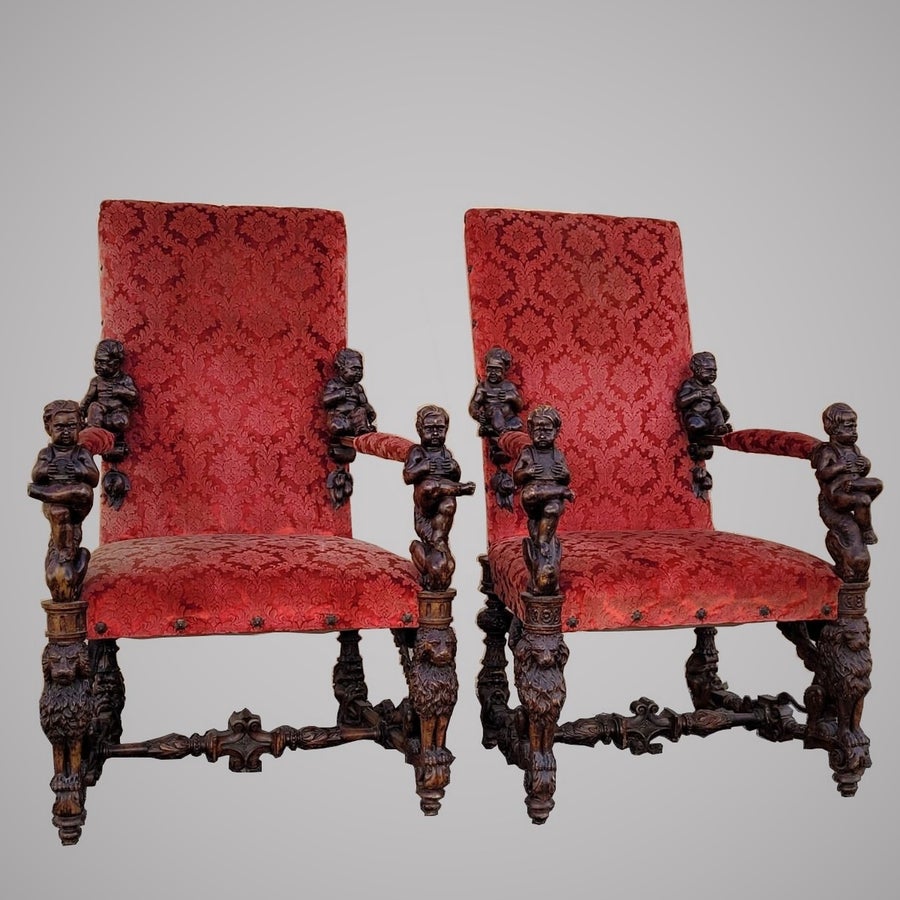
About the Seller
5.0
Gold Seller
Premium sellers maintaining a 4.3+ rating and 24-hour response times
Established in 1999
1stDibs seller since 2022
25 sales on 1stDibs
Typical response time: 2 hours
- ShippingRetrieving quote...Shipping from: MARSEILLE, France
- Return Policy
Authenticity Guarantee
In the unlikely event there’s an issue with an item’s authenticity, contact us within 1 year for a full refund. DetailsMoney-Back Guarantee
If your item is not as described, is damaged in transit, or does not arrive, contact us within 7 days for a full refund. Details24-Hour Cancellation
You have a 24-hour grace period in which to reconsider your purchase, with no questions asked.Vetted Professional Sellers
Our world-class sellers must adhere to strict standards for service and quality, maintaining the integrity of our listings.Price-Match Guarantee
If you find that a seller listed the same item for a lower price elsewhere, we’ll match it.Trusted Global Delivery
Our best-in-class carrier network provides specialized shipping options worldwide, including custom delivery.More From This Seller
View AllCast Iron Mercury Statue
Located in MARSEILLE, FR
Representation of Mercury in cast iron on a wooden base: Mercury (Roman God) or Hermes (Greek God), the messenger god of the other gods is recognizable here thanks to the caduceus he...
Category
Antique 18th Century European Greco Roman Figurative Sculptures
Materials
Iron
$2,047
E Picault, Victoria, Bronze Sculpture, Late 19th Century
By Émile Louis Picault
Located in MARSEILLE, FR
Victoria: bronze sculpture with a brown patina of a victorious warrior, on a red marble base
This bronze is entitled "Victoria" and is signed by the artist Emile Picault
Emile Pica...
Category
Antique 19th Century French Napoleon III Figurative Sculptures
Materials
Marble, Bronze
U Rusconi, Medusa, Signed Bronze, Late 19th Early 20th Century
Located in MARSEILLE, FR
Medusa: bronze with a brown patina, relating the myth of the gorgon or Medusa
According to mythology, Medusa is a beautiful young woman who made a vow to serve the goddess Athena, ...
Category
Antique Late 19th Century Italian Napoleon III Figurative Sculptures
Materials
Bronze
E Marioton, Pompeian Dancer, Signed Bronze, Late 19th Early 20th Century
By Eugene Marioton
Located in MARSEILLE, FR
Large bronze dancer with a brown patina, on a green marble base: she bears the name of Pompeian Dancer on a cartouche. She plays delicately with her veil, balanced on one foot, on a ...
Category
Antique Late 19th Century French Art Nouveau Figurative Sculptures
Materials
Bronze
P Le Faguays -max Le Verrier, Glory, Art Deco Sculpture, 20th Century
By Pierre Le Faguays
Located in MARSEILLE, FR
Glory: spelter sculpture with green patina representing a man seated on a high black marble base and brandishing the palm of victory or glory above his head
Sculpture signed on the ...
Category
Early 20th Century French Art Deco Figurative Sculptures
Materials
Marble, Spelter
Ruffony, The Oath, Signed Bronze Sculpture, Late 19th Early 20th Century
By Ruffony
Located in MARSEILLE, FR
The Oath: bronze sculpture with a brown patina, of a young man, sword in hand, taking an oath
The round base is titled and signed by the artist: Oscar Ruffony. Swiss sculptor, but a...
Category
Antique Late 19th Century French Napoleon III Figurative Sculptures
Materials
Bronze
You May Also Like
A Patinated Bronze Figure of Mercury, Late 19th Century
By Giambologna
Located in ARMADALE, VIC
A Patinated Bronze Figure of Mercury, Late 19th Century
Provenance: Private Australian Collection.
Description:
Modelled after Giambologna’s most celebrated work, the figure of Me...
Category
Antique Late 19th Century Italian Figurative Sculptures
Materials
Bronze
19th Century Italian Patinated Bronze of Mercury Life-Size
Located in Dallas, TX
A beautiful 19th century Italian patinated bronze figure of Mercury after the model by Giambologna. Resting on a marble pedestal
Category
Antique Late 19th Century Figurative Sculptures
Materials
Bronze
Large Italian Bronze Mercury Statue Casting Hermes by Giambologna
Located in Potters Bar, GB
Incredible giant bronze statue of the famous Mercury statue
The original version of this was by Italian artist Giambologna
This version is over six feet tall - almost 2 metres
Mercur...
Category
Vintage 1980s Statues
Materials
Bronze
Amazing Mercury Sculpture in Bronze 20th Century
Located in Madrid, ES
Amazing Mercury sculpture in bronze H: 190cm 20th century
Lost wax and patinated bronze reproduction of the Mercury sculpture by Giambologna.
The ...
Category
20th Century Italian Modern Figurative Sculptures
Materials
Bronze
Bronze sculpture of the god Mercury
Located in Buenos Aires, Argentina
Bronze sculpture of the god Mercury
Representation of the god Mercury standing on Aeolus, the god of the wind
(after Gianbologna)
Origin France Circa 1900
Base of green Alpine marble...
Category
Antique Early 1900s French Neoclassical Figurative Sculptures
Materials
Marble, Bronze
After Giambologna Mercury Sculpture
By Giambologna
Located in Norwalk, CT
19th C. spelter sculpture. Unsigned.
Category
Antique 19th Century Figurative Sculptures
Materials
Spelter
More Ways To Browse
Antique Column Base
Bronze Frieze
Bronze Sculptured Lamps
Gold Lamp Sculpture
Marble Column Base
Gold Mercury Lamps
Bronze Mercury After Giambologna
Flying Mercury
Lladro Girl
Moreau Boy
Murano Dancers
Murano Glass Dancers
Plaster Foot Sculpture
Pomegranate Sculpture
Porcelain Bisque Figurine
Remington Bronze
Resin Skulls
Resin Woman Sculpture

